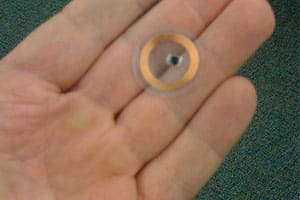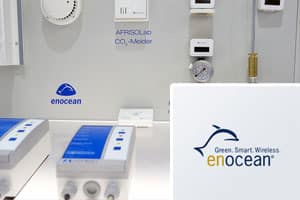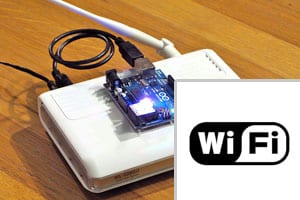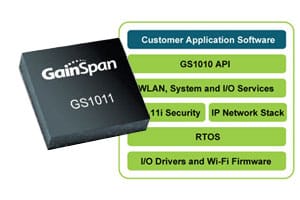
IoT Technology Guidebook
An overview to what makes up Internet of Things (IoT) systems and devices. From sensors and communication protocols to APIs and machine learning.
The “Internet of Things” covers a huge scope of industries and applications.
The following Channel Guide will help you:
- Provide glimpse of different ways to view an IoT technology stack
- Dive into data management and API cloud brokers
- Move into understanding of higher level technologies like machine learning and user experience feedback and analytics
11/01/2019
Communication:

 |
|
 |
RFID - ISO/IEC Standards list Description: "A radio-frequency identification system uses tags, or labels attached to the objects to be identified. Two-way radio transmitter-receivers called interrogators or readers send a signal to the tag and read its response. The readers generally transmit their observations to a computer system running RFID software or RFID middleware.RFID tags can be either passive, active or battery assisted passive. An active tag has an on-board battery and periodically transmits its ID signal. A battery assisted passive (BAP) has a small battery on board and is activated when in the presence of a RFID reader." - Overview video Frequency: 120–150 kHz (LF), 13.56 MHz (HF), 433 MHz (UHF), 865-868 MHz (Europe)902-928 MHz (North America) UHF, 2450-5800 MHz (microwave), 3.1–10 GHz (microwave) Range: 10cm to 200m Examples: Road tolls, Building Access, Inventory |
 |
EnOcean - ISO/IEC 14543-3-10 (Alliance) Description: "The EnOcean technology is an energy harvesting wireless technology used primarily in building automation systems; but is also applied to other applications in industry, transportation, logistics and smart homes.Modules based on EnOcean technology combine micro energy converters with ultra low power electronics and enable wireless communications between batteryless wireless sensors, switches, controllers and gateways." - Overview VideoFrequency: 315 MHz, 868 MHz, 902 MHz Range: 300m Outdoor, 30m Indoors Examples: Wireless switches, sensors and controls |
 |
NFC - ISO/IEC 18092 and ISO/IEC 14443-2,3,4, JIS X6319-4 Description: "NFC is a set of short-range wireless technologies, typically requiring a distance of 10 cm or less. NFC operates at 13.56 MHz on ISO/IEC 18000-3 air interface and at rates ranging from 106 kbit/s to 424 kbit/s.NFC always involves an initiator and a target; the initiator actively generates an RF field that can power a passive target. This enables NFC targets to take very simple form factors such as tags, stickers, key fobs, or cards that do not require batteries. NFC peer-to-peer communication is possible, provided both devices are powered"Frequency: 13.56 MHz Range: < 0.2 m Examples: Smart Wallets/Cards, Action Tags, Access Control |
 |
Bluetooth (SIG)
Description: Frequency: 2.4GHz |
 |
WiFi (Alliance)
Description: Frequency: 2.4 GHz, 3.6 GHz and 4.9/5.0 GHz bands. |
 |
Weightless (SIG)
Description: Frequency: Varies with legislation (470 – 790MHz) |
 |
GSM (Association)
Description: Terrestrial GSM networks now cover more than 90% of the world’s population. GSM satellite roaming has also extended service access to areas where terrestrial coverage is not available." Frequency: Europe: 900MHz & 1.8GHz, US: 1.9GHz & 850MHz, Full List can be found here. |
| Additional: | |
Backbone: |
|
| A few key components to an Internet of Things architecture. | |
| IPv4 and IPv6 | Description: "Internet Protocol version 6 (IPv6) is the latest revision of the Internet Protocol (IP), the communications protocol that provides an identification and location system for computers on networks and routes traffic across the Internet.Every device on the Internet must be assigned an IP address in order to communicate with other devices. With the ever-increasing number of new devices being connected to the Internet, the need arose for more addresses than IPv4 is able to accommodate. IPv6 uses a 128-bit address, allowing 2128, or approximately 3.4×1038 addresses, or more than 7.9×1028 times as many as IPv4, which uses 32-bit addresses.' |
| UDP | Description: "The User Datagram Protocol (UDP) is one of the core members of the Internet protocol suite (the set of network protocols used for the Internet). With UDP, computer applications can send messages, in this case referred to as datagrams, to other hosts on an Internet Protocol (IP) network without prior communications to set up special transmission channels or data paths." |
| TCP
|
Description: "The Transmission Control Protocol (TCP) is intended for use as a highly reliable host-to-host protocol between hosts in packet-switched computer communication networks, and in interconnected systems of such networks." |
| 6LoWPAN |
Description: "6LoWPAN is an acronym of IPv6 over Low power Wireless Personal Area Networks. The 6LoWPAN group has defined encapsulation and header compression mechanisms that allow IPv6 packets to be sent to and received from over IEEE 802.15.4 based networks." |
Internet of Things Hardware:
 |
Wireless SoC (system on chip)
Manufactures like Gainspan, Wiznet, Nordic Semiconductor, TI and others are creating self-contained, RF-certified module solutions that have TCP, UDP and IP on chip. These solutions include built-in security features, can reduce certification times and allow companies to add communication to any microcontroller-based (MCU-based) product with little RF expertise. |
 |
Prototyping boards and platforms
From the Arduino to the Raspberry Pi to the new BeagleBone Black, there are a large number of community DIY and prototyping platforms available that are making its possible to create your own Internet of Things project. You can see a directory of some of these prototyping hardware here. |
| From "Smart Dust" systems that can be embedded (and even ingested) all the way to the satellites driving an Interplanetary Internet system. The range of hardware devices that will drive an Internet of Things is huge and too broad to cover effectively in an overview article. | |
Software |
|
 |
Riot OS Description: "RIOT OS is an operating system for Internet of Things (IoT) devices. It is based on a microkernel and designed for energy efficiency, hardware independent development, a high degree of modularity."
|
 |
Thingsquare Mist Description: "Thingsquare Mist brings resilient wireless mesh networking and true Internet-connectivity to the Internet of Things. The Thingsquare Mist open source firmware is exceptionally lightweight, battle-proven, and works with multiple microcontrollers with a range of radios.Thingsquare Mist typically runs on hardware with 64-256 kilobytes of flash and 16-32 kilobytes of RAM." |
| - View more Internet of Things software projects here. | |
Protocols |
|
| CoAP
|
Description: "Constrained Application Protocol (CoAP) is a software protocol intended to be used in very simple electronics devices that allows them to communicate interactively over the Internet. It is particularly targeted for small low power sensors, switches, valves and similar components that need to be controlled or supervised remotely, through standard Internet networks.CoAP is an application layer protocol that is intended for use in resource-constrained internet devices, such as WSN nodes. CoAP is designed to easily translate to HTTP for simplified integration with the web, while also meeting specialized requirements such as multicast support, very low overhead, and simplicity" |
| RESTful HTTP | Description: "Representational State Transfer (REST) is a style of software architecture for distributed systems such as the World Wide Web. REST has emerged as a predominant web API design model. " |
| MQTT | Description: "Message Queue Telemetry Transport (MQTT) is an open message protocol for M2M communications that enables the transfer of telemetry-style data in the form of messages from pervasive devices, along high latency or constrained networks, to a server or small message broker." |
| XMPP | Description: "The Extensible Messaging and Presence Protocol (XMPP) is an open technology for real-time communication, which powers a wide range of applications including instant messaging, presence, multi-party chat, voice and video calls, collaboration, lightweight middleware, content syndication, and generalized routing of XML data." |
| - View a complete list of Internet of Things Protocols. | |
Data Brokers / Cloud Services |
|
 |
ThingWorx
Description: |
 |
EVRYTHNG
Description: |
 |
Sense Description: "Open.Sen.se an open platform for all those who want to imagine, prototype and test new Devices, Installations, Scenarios, Applications for this globally interconnected and immersive world. Designers, developers, tinkerers, students, hobbyists, R&D departments, artists, self quantifiers, dataviz maniacs, whatever your skills are, we tried to make Open.Sen.se easy to use and yet powerful for you. Needless to say Open.Sen.se is free.' |
| - View a more comprehensive list of IoT Platforms. | |
Machine Learning |
|
 |
Grok Engine
Description: |

